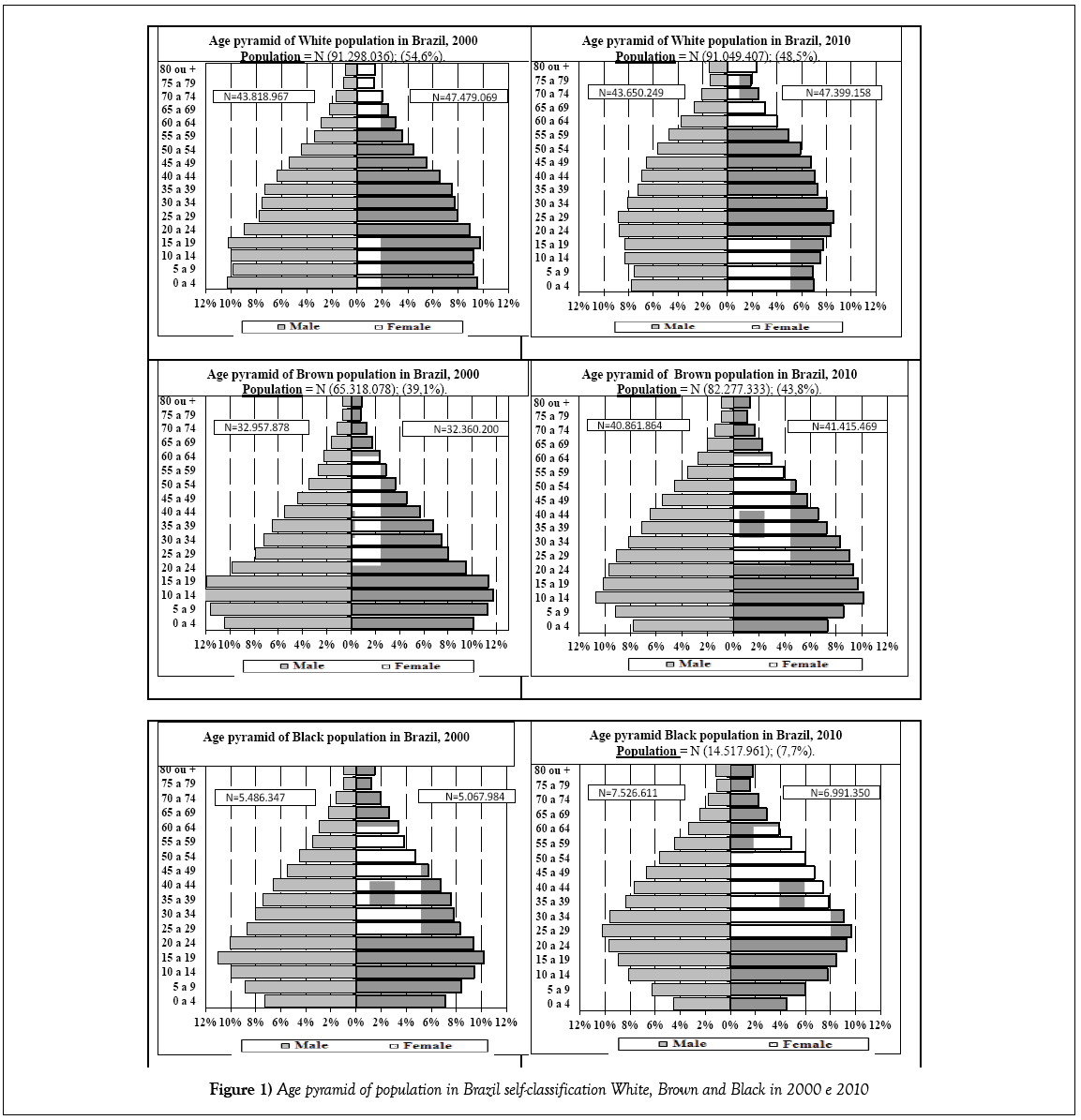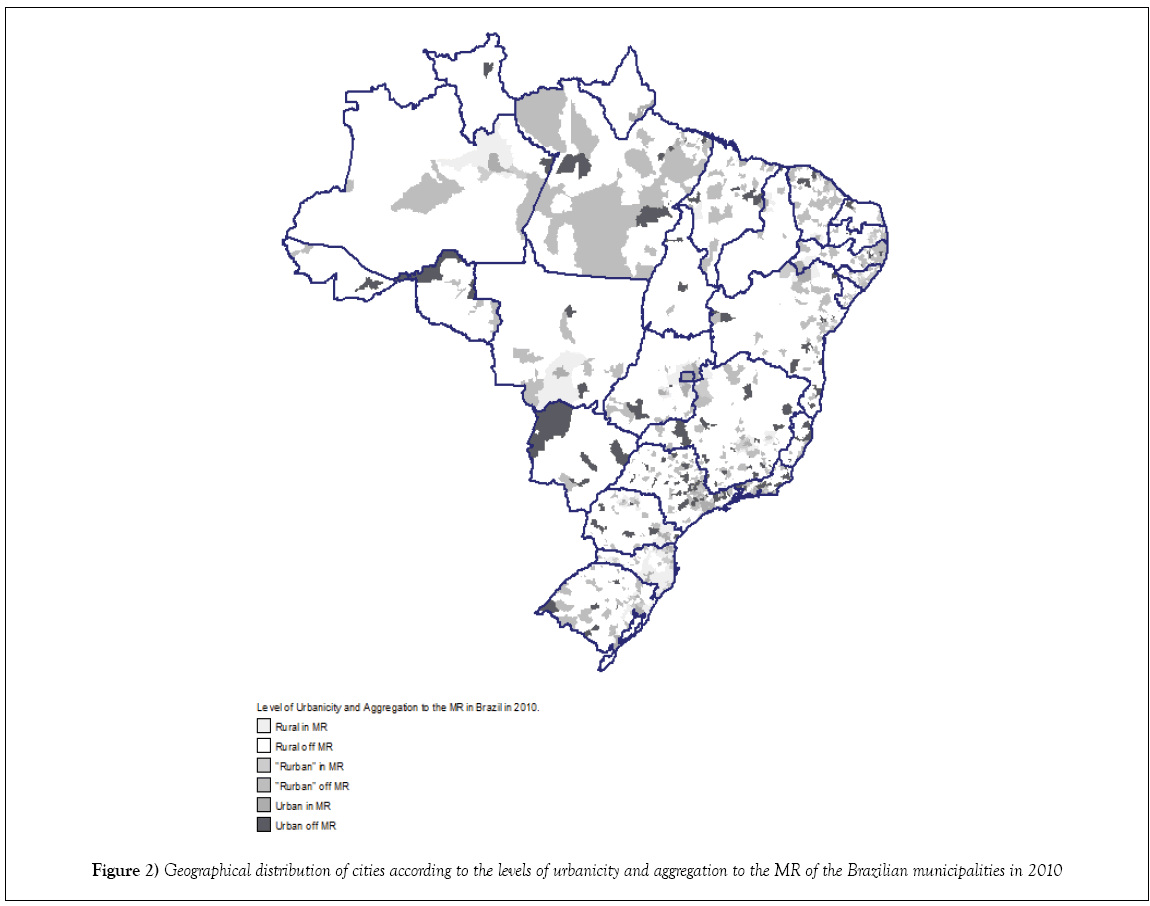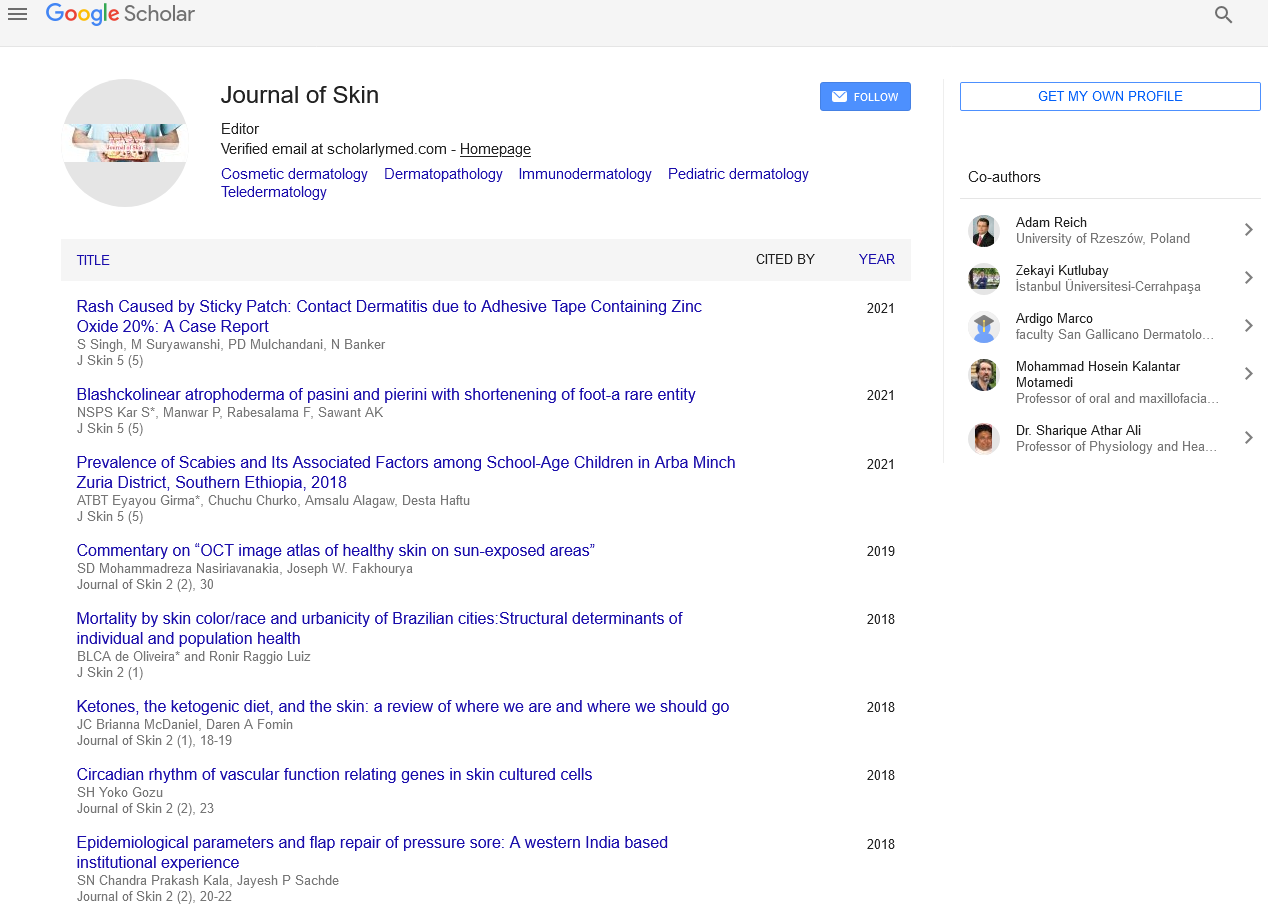Mortality by skin color/race and urbanicity of Brazilian cities:Structural determinants of individual and population health
2 Institute for Studies in Public Health, Rio de Janeiro, Brazil, Email: ronir@iesc.ufrj.br
Received: 21-Dec-2017 Accepted Date: Jan 03, 2018; Published: 10-Jan-2018
Citation: de Oliveira BLCA, Luiz RR. Mortality by skin color/race and urbanicity of Brazilian cities: Structural determinants of individual and population health. J Skin. 2018;2(1):4-6.
This open-access article is distributed under the terms of the Creative Commons Attribution Non-Commercial License (CC BY-NC) (http://creativecommons.org/licenses/by-nc/4.0/), which permits reuse, distribution and reproduction of the article, provided that the original work is properly cited and the reuse is restricted to noncommercial purposes. For commercial reuse, contact reprints@pulsus.com
Abstract
This is a descriptive study on racial composition of the population and mortality relating to skin color/race, according to sex and the city in which the deceased individual lived in Brazil. There were utilized dates about population during the census year of 2000 and 2010 and death data in 2010, to elaborate age pyramid of population in Brazil self-classification White, Brown and Black in 2000 e 2010. The risk of death was estimated by premature mortality rate (PMR) from 15 to 24 years, per 100,000 inhabitants and age adjusted. The results revealed that Brazilian population turned racially more diverse, but whites presented earned on age structure. The ageadjusted PMR from 15 to 24 years indicated browns and blacks both sexes with major risk death that white groups. These inequalities reflect a set of structural disadvantages and aspects of social organization within cities.
Keywords
Mortality; Health inequalities; Urbanicity; Race or ethnic group distribution; Cities
Inequalities in the life and health situations have been widely analyzed in various countries and regions in the world [1-3] and these have contributed towards identifying vulnerable social groups, evaluating health, premature deaths and life expectancy levels of populations independently of their stage of socioeconomic development [1,4-8] However, in Brazil there was be limited comprehension of the role of skin color or race, urbanicity and metropolitan region with determinants of racial composition of the population and premature deaths at a national scope from different types of population size of Brazilian cities and their levels of urbanicity [1,5].
Therefore, this study described the characteristics of racial composition and mortality relating to skin color/race, according to age, sex, and the municipality in which the deceased individual lived, in Brazil in 2010.
Methods
This is a descriptive study on racial composition of the population and mortality during the census year in Brazil. There were utilized dates about population during the census year of 2000 [9] and 2010 [10] and death data recorded in the Mortality Information System [1,5].
There were used the deaths that occurred during the census year of 2010 that were registered in the municipality of residence of the individual who died. In 2010, there were 5565 municipalities in Brazil, these cities were classified according the criteria available in Oliveira1 (level of urbanicity and aggregation to an Metropolitan Region (MR)) into six categories: rural within MR, rural outside MR, ‘rurban’ within MR, ‘rurban’ outside MR, urban within MR and urban outside MR.
There were elaborated age pyramid of population in Brazil self-classification White, Brown and Black in 2000 e 2010. In turn, the risk of death was estimated by premature mortality rate (PMR) from 15 to 24 years according to skin color/race and sex, specifically according to the level of urbanicity and aggregation to an MR. These rates were multiplied per 100,000 inhabitants and age adjusted by the direct method using as the standard the age structure of Brazil in the census year of 2010.
Results
In Brazil, whites, browns and blacks summarized 167,170,427 million inhabitants in 2000, against 187,844,701 in 2010. In this recent census years, the racial composition of the Brazilian population turned racially more diverse. In 2000, the white population (54.6%) predominated over brown (39.1%) and black (6.3%), while by 2010 the proportion of white had decreased (48.5%), with an increase in browns (43.8%) and blacks (7.7%) (Figure 1).
The age pyramids for the Brazilian population demonstrate important differences in the age structure of the racial groups by sex. In 2000, the pyramids were characteristically young populations. But, in 2010, this composition by age has changed, with white presented in relation to the browns and blacks earned on age structure characterized by further reducing the birth rate and mortality, and higher proportions of population in higher age (Figure 2).
The age-adjusted PMR from 15 to 24 years indicates a distinct risk of death by skin color/race according to gender and specific level of urbanicity and aggregation to an MR of Brazilian city in 2010. In general, this risk of premature death was higher in men than in women and in browns and blacks than in white groups of both sexes (Table 1).
| Level of urbanicitya and aggregation to the MRb | Male | Female | ||||
|---|---|---|---|---|---|---|
| Whites | Browns | Blacks | Whites | Browns | Blacks | |
| Rural in MR | 27,9 | 30,0 | 35,3 | 7,4 | 7,8 | 8,4 |
| ‘Rurban’ in MR | 24,7 | 42,6 | 35,9 | 7,4 | 8,8 | 8,6 |
| Urban in MR | 30,4 | 58,2 | 36,3 | 7,2 | 9,0 | 8,2 |
| Rural off MR | 23,3 | 26,9 | 36,6 | 7,8 | 7,8 | 12,5 |
| Rurban’ off MR | 22,5 | 37,7 | 31,5 | 5,1 | 8,1 | 7,1 |
| Urban off MR | 27,8 | 45,3 | 39,0 | 7,6 | 8,7 | 11,0 |
| Brazil | 23,8 | 30,1 | 36,0 | 7,7 | 7,9 | 11,1 |
Notes: Rates adjusted by age using standard to Brazil’s population in the 2010 census
aRural=Municipalities with <50,000 and density <80 inhabitants/km2; ‘Rurban’=Municipalities with a population between 50,000 and 100,000 or density of ≥ 80
inhabitants/km2; Urban=Municipalities with >100,000 inhabitants
bRM=Municipalities belonging to the metropolitan areas, the Integrated Development Regions or in conurbations
Table 1: Age-standardized PMRs from 15 to 24 years averages, per 100,000 inhabitants, by skin color/race according to sex and specific levels of urbanity and aggregation to the MR of Brazilian cities in 2010
Discussion
The results revealed major inequalities in the racial composition of the population and mortality according to skin color/race in relation to age, sex, and level of urbanicity and aggregation to an MR among Brazilian cities in recent years. Similar to other studies [1-8], the results suggest that these racial disparities in the racial composition of the population and mortality rates can be attributed to the interaction of individual and contextual factors that create changes in lifestyles, health and socioeconomic and cultural status depending on the availability of health and social services or other stressors related to life in areas with high concentrations of poverty and institutional weakness [1,2]. So, the level of urbanicity, aggregated or not to an MR, of Brazilian cities worked as the factor that sets these contextual differences [1,5].
The racial inequalities were characterized by the age pyramids for the Brazilian population demonstrating important differences in the age structure and uneven trend growth type. In 2000, the pyramids were of young populations (pyramids of wide base, tilt walls and sharp apex), typical of least developed countries. But, in 2010, this composition by age has changed (there was a narrowing of the base and increase of adult classes and the old pyramid), with changes in the overall structure of the pyramids.
The racial inequalities still were characterized by the fact that risk deaths among individuals of brown and black skin color/race always were poorest among young men, with risk death typical of low health levels. In turn, risk deaths of white were lest among women, with mortality reflecting high health levels. These racial differences in mortality according to sex suggest, as observed in other studies, that sex has a role in the ranking of racial inequalities in health [2,3,5,7,8].
So, this study observed that urbanicity level and aggregation to MR may influence the racial health inequalities in the country. These inequalities reflect a set of structural disadvantages and aspects of social organization within cities.
REFERENCES
- Oliveira BLCA. Urbanização, Urbanicidade e Metropolização e suas influências na saúde. 1. ed. Saarbrücken: Novas edições acadêmicas. 2017;1:101.
- Inagami S, Borrel LN, Wong MD, et al. Residential segregation and latino, black and white mortality in New York city. J Urban Health. 2006;83:406-20.
- Singh GK, Siahpush M. Widening rural-urban disparities in all-cause mortality and mortality from major causes of death in the USA, 1969–2009. J Urban Health. 91;2:272-92.
- Vlahov D, Galea S. Urbanization, urbanicity and Health. J Urban Health. 2002;79:S01-12.
- Oliveira BLCA, Luiz RR. Mortality by skin color/race and urbanity of Brazilian cities. Ethn Health. 2017;22:372-88.
- Sharkey P. Stuck in place: Urban neighborhoods and the end of progress toward racial equality. Chicago: University of Chicago Press. 2013.
- Diez-Roux AV, Mair C. Neighborhoods and health. Ann N Y Acad Sci Hoboken. 2010;1186:125-45.
- Chiavegatto Filho ADP, Beltrán-Sánchez H, Kawachi I. Racial disparities in life expectancy in Brazil: Challenges from a multiracial society. Am J Public Health. 2014;104:2156-62.
- Instituto Brasileiro de Geografia e Estatística. Censo demográfico 2000: características gerais da população, resultados da amostra. Rio de Janeiro: IBGE 2003.
- Instituto Brasileiro de Geografia e Estatística. Censo demográfico 2010: características da população e dos domicílios, resultados do universo. Rio de Janeiro: IBGE 2011.







